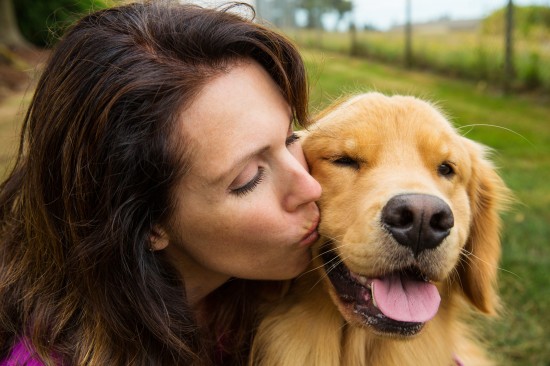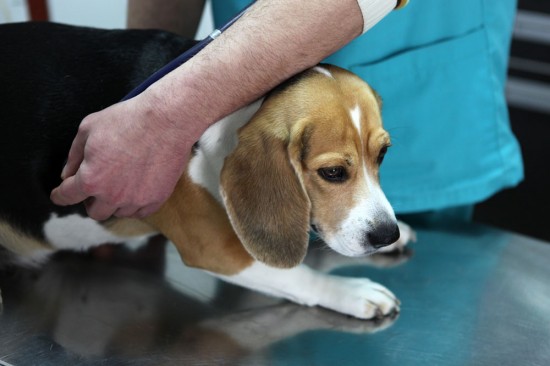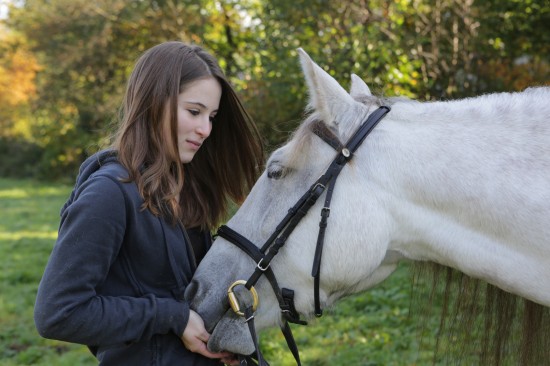
Your dog is probably stronger and healthier than most humans
that you know. However, by taking him from his natural
environment, where only the strongest survive, to the artificial
one in which most pet dogs live, we have exposed him to an
entirely new set of dangers which their instincts are not
designed to cope with.
A dog’s health is influenced by the genes inherited from his
parents and by the care given to his mother during the prenatal
period, as well as to the puppy during his first 2 or 3 months
of life. A puppy, whose mother was properly cared for during
pregnancy, will be more able to handle the hazards of growing up.
The majority of dogs lead perfectly healthy, normal lives. They
overcome occasional skin rashes, chills, and upset stomachs,
recover from cuts and bruises with ordinary care, sensible first
aid when necessary, and professional diagnosis and treatment of
serious ailments. Chances are that if you give you dog a normal
diet, a healthy home environment, a well balanced life, you will
only need to see the vet for check-ups and vaccinations.
A healthy dog’s temperature, taken rectally when he is rested,
is about 101.2 degrees in an adult dog, 102 in small breeds, and
102.5 in a puppy. It can fluctuate one way or the other, being
lower in the morning and higher in the late afternoon.
Long-coated breeds have a slightly higher normal temperature
than short-coated ones. His pulse is taken at the femoral
artery, high inside the thigh. There is no normal pulse rate for
dogs. It can range from 120 beats per minute in a young puppy,
to 70 or 80 in an older dog. Count the beats during 30 seconds
and multiply by 2. Normal respiration ranges from 20 or 30
respirations per minute for a puppy to 16 per minute in an older
dog.
A normal eye is bright and clear, although the lens becomes pale
blue as he ages. His nose is moist and cool most of the time,
but a dry, warm nose doesn’t always mean a fever or illness. His
tail wags and he carries himself normally. His coat is shiny and
sheds normally. He eats his meals without gulping compulsively
and without being coaxed, drinks a normal amount of water after
meals and exercise, and more during hot weather. His bowel
movements are regular and well-formed, his urine is clear and
both process’s are painless. As a puppy he sleeps most of the
time, but as an adult only about half the time, and he is
generally friendly, alert, and inquisitive.
A sick or ailing dog will have a temperature over 102 degrees, a
sign of fever, or under a 100, a sign of weakness. If it does
not return to normal within 24 hours, call the vet. If his
temperature is as low as 99, or as high as 104, call the vet
immediately. His pulse may be weak or irregular, his respiration
at rest may be irregular or labored, panting or weak. His eye
may appear dull, red or yellow with a sticky discharge. His nose
may be dry and hot, also with a discharge.
His tail may be immobile, carried stiffly or between the legs,
his coat may be dry and stand up when it should lay flat, the
skin may be itchy and flaky and there may be bald spots, or red
patches. He may eat with a good appetite but usually doesn’t
want food at all, and is usually reluctant to swallow any water.
His bowel movements may be abnormal in form or color, have a bad
odor, and contain blood or mucus, or he may be constipated with
no movement at all. The urine may be dark, cloudy, or painfully
produced.
He may sleep all of the time and hide in dark corners; his
breath may have a bad odor and be labored. He may show very
obvious symptoms of disorder such as swellings, protuberances,
lameness, pain, prolonged wheezing or coughing, and unusual
sensitivity in some part of his body. His overall general
behavior will be lethargic and unresponsive when he is normally
friendly and active, or nervous and excitable when he is the
quite type with snapping or snarling for no apparent reason.
The symptoms offered here which are fairly obvious and not too
far from our own human symptoms, (good and bad). It’s the
severity of the symptoms for an ailing dog that will determine
whether you should call the vet. Far sighted dog and cat owners
select a veterinarian as soon as they become a pet parent, for
sooner or later they get sick to some degree, and your chances
of prompt attention are better if the vet already knows your
pet.
 10 Of The Friendliest Dogs That Make Wonderful Family Pets
10 Of The Friendl
10 Of The Friendliest Dogs That Make Wonderful Family Pets
10 Of The Friendl
 26% Of Crufts Winners Are Overweight, Says Research In Veterinary Record
26% Of Crufts Win
26% Of Crufts Winners Are Overweight, Says Research In Veterinary Record
26% Of Crufts Win
 How Long Will It Take For A Dog To Bond With A New Owner?
How Long Will It
How Long Will It Take For A Dog To Bond With A New Owner?
How Long Will It
 Pyometra In Dogs - Causes, Treatment And Prevention
Pyometra In Dogs
Pyometra In Dogs - Causes, Treatment And Prevention
Pyometra In Dogs
 Aflatoxin Poisoning In Horses Explained
Aflatoxin Poisoni
Aflatoxin Poisoning In Horses Explained
Aflatoxin Poisoni
Copyright © 2005-2016 Pet Information All Rights Reserved
Contact us: www162date@outlook.com